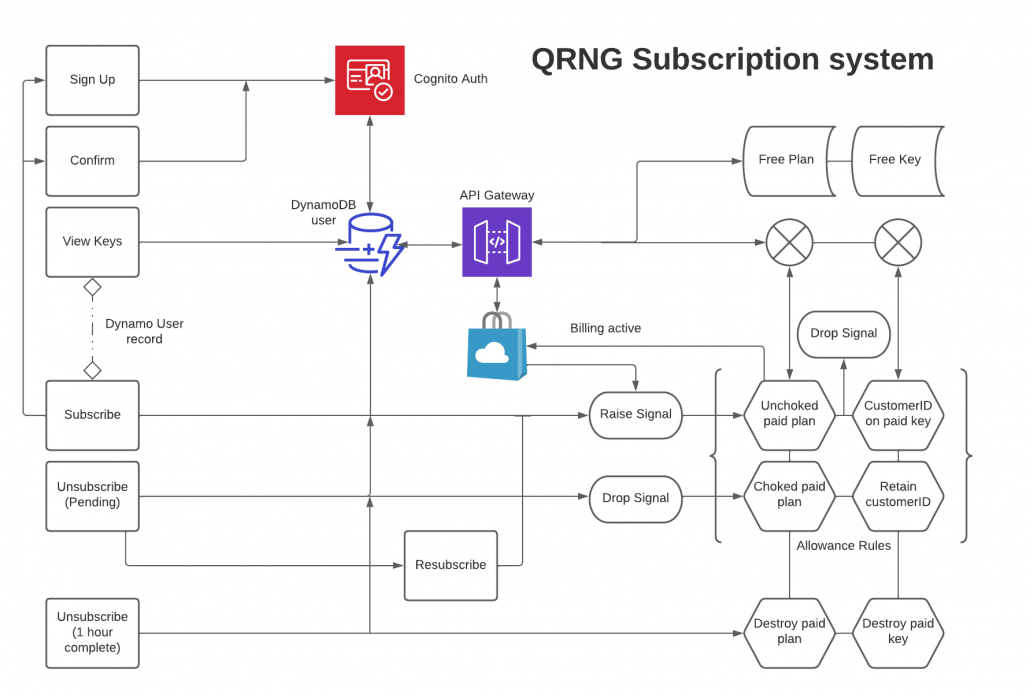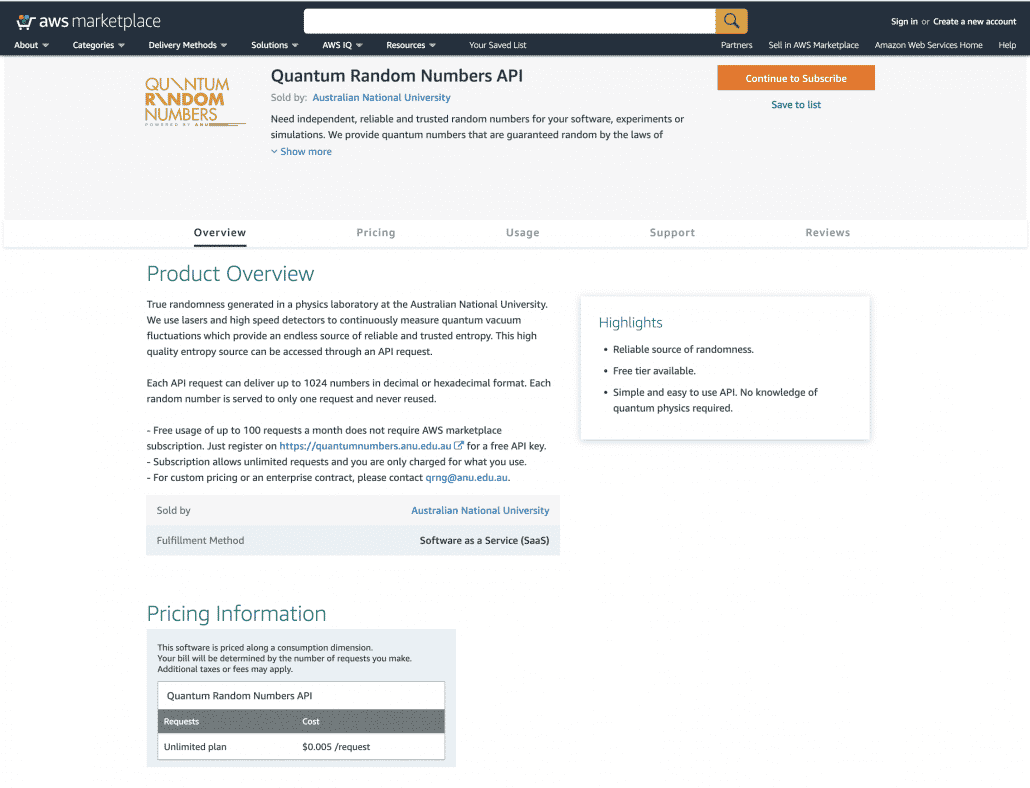
In 2021 the Australian National University (ANU) launched ANU Quantum Numbers (AQN), the world’s fastest on demand quantum random number generator on AWS marketplace. By harnessing the quantum nature of lasers, high speed and truly random numbers are generated in real time creating a powerful tool for research students, academics, and IT specialists that need random numbers in their experiments.
The service took a major maturation step in 2022 when a cloud-enabled version of the site, on the AWS platform, was brought to life by our capitalising on the extensive serverless capabilities, and other scalability and security enablement features of AWS, in addition to offering it as purchasable service in the AWS marketplace.
The outcome
We successfully created a secure, scalable architecture in AWS that allowed for user authentication, user subscriptions and API key generators to turn an idea conceived in the ANU labs into a viable, scalable, robust and billable product available to anyone in the world.
At its heart, the solution facilitated an interface to broker data between the quantum laboratory, physically located at the ANU in Canberra to consumers of the service connected to the AWS Marketplace.
The solution establishes a pathway for conventional User Interfaces and low-level code request architectures to interface, across the cloud, to quantum computing devices.
ANU Requirements
ANU required a secure, scalable system to connect to their isolated quantum laboratory and serve unique feeds to authorised users. The system would require the following components:
- Broker data transfer from isolated quantum laboratory systems
- Distribute a data feed with high volume & availability
- Implement and enforce user access policies
- User authentication
- User subscription model
- Policy based service point exposure (API)
- Service point compute
- A cached data feed
- Guaranteed uniqueness of numbers consumed by purchasing parties
Our solution
The teams started by mapping out the various components required for the system. After reviewing the initial proof of concept code base provided by the ANU labs, additional layers for improved security and stability were added to the project scope.
The proposed system architecture that was developed, after a number of iterations within our team, was accepted by the ANU team. The proposed solution included the following elements:
- Signup form hosted from a static S3 bucket
- Lambda functions for security model and service point access
- ‘Backend logic’ to coordinate authenticated users with AWS Marketplace subscriptions and adherence to a tiered pricing model
- Scripting all of the interactive processes into CDK for on-the-fly deployment to significantly cut ongoing AWS costs

Key components
The architecture supported brokering of the data feed from the ANU labs creating a high volume stream of unique quantum-generated random numbers, made available as an API-accessible feed via the AWS marketplace. The brokering functionality also enforced user access policies. User authentication was governed by linking DynamoDB and Cognito, to a static website hosted in an S3 bucket.
The user subscription system was hosted in the AWS Marketplace with policy based service point exposure being handled via API Gateway.
Data feeds coming out of the ANU labs were cached through S3 and SQS/SNS/CloudWatch services.
Service point compute processes were coded in various Lambdas.

Challenges
We guided the ANU labs team with migrating their existing interface code base to enterprise standards and reimplemented some layers for improved security and stability.
Making the Marketplace subscriptions work with API GateWay billing and access policies presented some challenges including :-
- The number of edge cases in signing up for API GateWay billing via the MarketPlace Subscription system complicated the user sign-up process.
- Serving APIs via the AWS Marketplace at the time of solution implementation was a relatively new AWS feature-set and in cases where the documentation may have lagged, the AWS support team were quick to resolve issue
Solutions
We were greatly assisted by AWS personnel toward better understanding the available documentation on the AWS Marketplace API as a Service feature – our empirical observations were instrumental in identifying areas requiring clarification and the AWS support team collaborated enthusiastically in ensuring successful adoption of the technology.
Our architectural and platform implementation resulted in a functionally secure subscription system, rather than being reliant on security ‘by assumption’.
Code examples
The AQN JSON API supports three parameters. These are:
- Data type, the data type must be ‘uint8’ (returns integers between 0- 255), ‘uint16’ (returns integers between 0-65535), ‘hex8’ (returns hexadecimal characters between 00-ff) or ‘hex16’ (returns hexadecimal characters between 0000-ffff).
- Array length, the length of the array to return. Must be between 1- 1024.
- Block size, only needed for ‘hex8’ and ‘hex16’ data types. Sets the length of each block. Must be between 1-10.
An API key which you can be granted for free at sign up, is required
API_URL=https://api.quantumnumbers.anu.edu.au
API_KEY=your_secret_api_key
curl -X GET -H x-api-key:${API_KEY}
${API_URL}?length=[array length]&type=[data
type]&size=[block size]
About the ANU QRNG
In 2021 ANU launched ANU Quantum Numbers (AQN), the world’s fastest on demand quantum random number generator on AWS marketplace. By harnessing the quantum nature of lasers, high speed and truly random numbers are generated in real time. This is be useful for research students, academics, and IT specialists that need random numbers in their experiments.
Random numbers are needed in many applications in IT, data science, arts, gaming industry and research. A poor source of randomness will lead to biased or unreliable results. Generating a provably random string of numbers is hard–every algorithmic random number generator by definition can be computed.
Quantum physics literally provides an infinite source of truly random numbers. These quantum random numbers are guaranteed by the laws of physics to be unpredictable and unbiased. The Australian National University Quantum Optics Group has made this source of randomness easily accessible through the QRNG service. Customers now have access to reliable high speed quantum random numbers for their applications without having to deal with messy hardware or complicated algorithms.
AQN can be integrated into any application or experiment that have access to the internet. The service is hosted on AWS and offers 24 hours reliable operation and high speed connection anywhere around the globe. ANU’s service uses simple API and different usage plans to allow everyone, from hobbyist to data scientists, to use quantum random numbers in their projects with effortless ease.
For more information on go to https://quantumnumbers.anu.edu.au